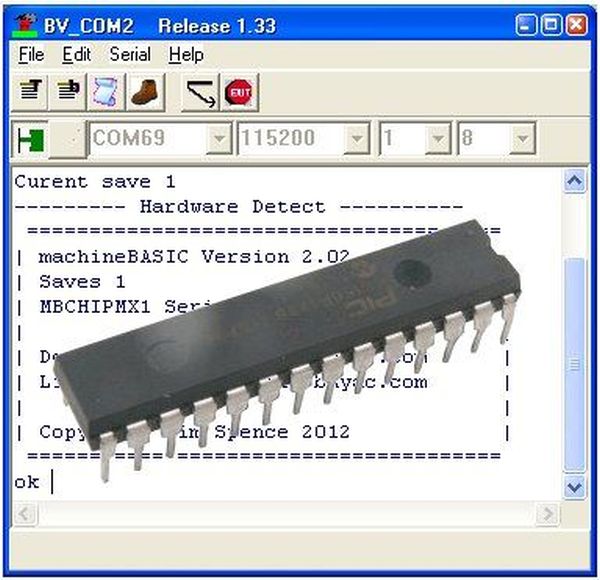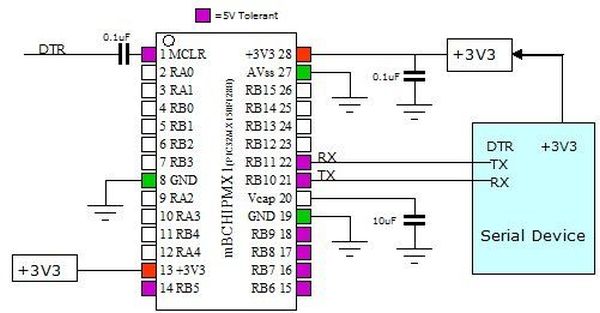$15.00 BASIC Computer?
Yes is the answer to all of the above questions. I am the author of machineBASIC and I have been waiting 40 years for a chip manufacturer to produce in a DIL package something powerful enough to run a high level language that is easy to use, thank you Microchip. Some old timers may have heard of a language called Forth. Well this is not Forth but BASIC however it is compiled in the same way as Forth and so has all of the speed and modularisation advantages without the drawback of write only code.

What’s Needed
The IC is a PIC32MX1 with machineBASIC (mB) loaded onto it. It is currently only available from www.byvac.com and can be purchased on its own, as a starter kit or as a more comprehensive kit. I will be explaining here how to get the device going with the starter kit, the individual IC is much cheaper than $15, so you will need the following:
*) Starter kit (BV500-s1) or just the IC if you have a USB to serial link
*) 2 x 0.1uF capacitors
*) 1 x 4.7 to 10uF capacitor
*) Solderless Bread board and hook up wire
*) Terminal software from here http://doc.byvac.com/index.php5?title=Downloads (select BV_Com)
All of the above is provided in BV500-k1 but I will assume that you have already got a breadboard of your own.
Step 1: Video Format
Starting
When the IC’s are new the pins are splayed out and so you need to hold them against a flat surface and use a turning action to push them in otherwise they will not mate with the holes in the breadboard.
Connect link wires to the USB serial interface.
This is the type that comes with the starter kit. If you have your own device than it must be able to work with 3.3V. It doesn’t matter if it is a 5V type as the pins that are used on the IC for the serial interface are 5V tolerant. This type however will supply 3v3 from the VCC pin. RX and TX are essential but the connection to DTR is optional and is used to conveniently reset the device using the free BV_COM software. Convenient as you don’t need to lean over to press any buttons.
The other end of the link wires are pins that will push into the breadboard
Hookup

Here is the complete wiring diagram. Note that there are three ground connections and two connections that go to the 3.3V supply. The Vcap shown here at 10uF is essential, the positive end goes to pin 20. A 4.7uF will also work but 10uF is recommended by the manufacturers. The 0.1uF capacitor connected between 3.3V and ground is there to cut down noise. As a general rule 0.1uF capacitors are sprinkled round electronic circuits much like hundreds and thousands are on a cake.
The 0.1uF capacitor that connects DTR to pin 1 is optional. If you do not have a DTR then use the circuit as shown for resetting the controller.
